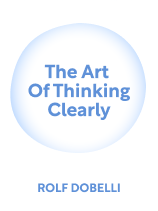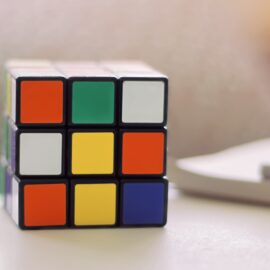

This article is an excerpt from the Shortform book guide to "The Art of Thinking Clearly" by Rolf Dobelli. Shortform has the world's best summaries and analyses of books you should be reading.
Like this article? Sign up for a free trial here .
What is the salience effect? Why does the brain tend to focus on the most flashy, salient stimuli to the exclusion of everything else?
As the name suggests, the salience effect is the tendency to focus on the most salient stimuli in the environment. The salience effect relies on your past experiences. You might notice certain unusual details due to, for instance, your career or past experiences, while someone else would notice different details.
Keep reading to learn about the salience effect, why it occurs, and how to overcome it.
The Salience Effect
Your brain latches onto unusual or notable factors of a situation and gives these factors too much credit for causing the situation—that’s the salience effect. Popular attention influences which factors the salience effect focuses on. For example, many people talk about the importance of going to college to get a good job. If you meet a person whose business failed and they don’t have a college degree, your mind will latch onto that salient factor because it’s at the forefront of your mind, and you’ll attribute the failed business to the person’s lack of a college degree. Meanwhile, the owner’s education might have had no impact on the failure of the business.
(Shortform note: Businesses try to draw popular attention to their products by standing out among their competitors. This is increasingly difficult as advertisements infiltrate all of modern life and people become adept at ignoring them. However, there’s a form of popular attention that is very common in modern life: star reviews. Whether it’s movies, restaurants, or an online purchase, people rely on this modern version of word of mouth when making decisions.)
Dobelli recommends avoiding the salience effect by ignoring the easiest or most obvious information and looking for the less flashy causes behind situations.
How to Overcome the Salience Effect
Dobelli’s suggestion to look for the less obvious causes behind situations can be difficult to put into action, since you’re competing directly against the powerful salience effect. Here are a few tips to make this easier:
1. Look for the less obvious causes of a situation by asking a lot of “why”s, slowing down to consider the answers to these “why”s, and being critical about how much you really understand about the potential causes.
2. Surround yourself with people from diverse backgrounds. As discussed, past experience determines which facts you focus on. Knowing people who can bring different experiences to a situation means you can combine your assessments to see the whole picture.
3.Provide real-time feedback. If you want to combat the salient traits you initially notice, provide other salient information: For instance, focus on the possible consequences of your decision as you’re making it. If you’re buying a car, seeing how fuel costs affect your budget can help you look past the impressive paint job.

———End of Preview———
Like what you just read? Read the rest of the world's best book summary and analysis of Rolf Dobelli's "The Art of Thinking Clearly" at Shortform .
Here's what you'll find in our full The Art of Thinking Clearly summary :
- A detailed look at the most common logical fallacies that inhibit decision-making
- How to recognize and overcome these fallacies to make better decisions
- Why you value things for arbitrary reasons






